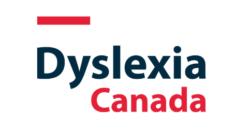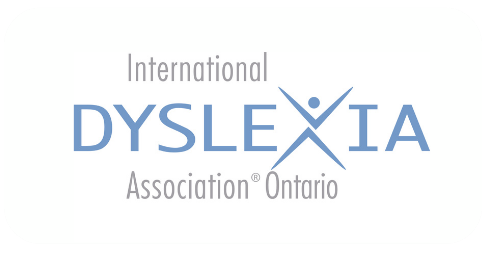Continuum des notions fondamentales de la lecture et de l’écriture
de la 1ʳᵉ à la 4ᵉ année, attente B2
Thèmes
Phonétique: Correspondances phonèmes-graphèmes
La correspondance graphèmes-phonèmes (CGP) signifie l’association entre un graphème (lettre ou groupe de lettres) et le phonème correspondant, par exemple, lorsque l’élève voit la lettre <d> et articule le phonème /d/ (comme dans le mot <dent>). Elle peut également être appelée correspondance lettre-son. Le développement de cette habileté permet aux élèves de lire des mots, en associant les graphèmes aux phonèmes. La compréhension de cette relation permet également aux élèves d’orthographier des mots en prononçant les mots, en les décomposant en phonèmes et en représentant chaque phonème par un graphème correspondant.
Connaissances et habiletés
Annexe A
Voir tous les détails dans ce document: Annexe A. Continuum des notions fondamentales de la lecture et de l’écriture, de la 1ʳᵉ à la 4ᵉ année, attente B2.
Développement
La compréhension de la phonétique se développe progressivement grâce à un enseignement systématique et explicite. Les élèves apprennent les correspondances graphèmes-phonèmes et comment utiliser ces relations pour lire et épeler les mots. Sans cet enseignement basé sur le code alphabétique, la majorité des élèves éprouvent des difficultés en lecture et/ou en orthographe.
L’enseignement de la phonétique a le plus grand impact sur les lecteurs et les lectrices débutants en jardin et en première année et devrait être mis en œuvre dans ces classes (NRP, 2000). Pour les élèves qui ont du mal à lire correctement, y compris ceux et celles qui ont la dyslexie, l’intervention doit travailler la phonétique afin d’améliorer la lecture des mots.
Importance
La phonétique permet à l’élève de développer les fondements de la compréhension de la lecture. En apprenant la phonétique, les élèves acquièrent la capacité de décoder les mots. Le décodage permet aussi aux élèves de lire des phrases, et graduellement, des textes avec précision.
Le cerveau humain n’est pas conçu pour lire. Un enseignement ciblé et structuré de la phonétique peut prévenir l’échec de la lecture chez les élèves du cycle préparatoire et du primaire, remédier aux difficultés des élèves des cycles moyen, intermédiaire et supérieur, et améliorer les compétences en lecture et en orthographe de tous les élèves (Tolman et al, 2020).
Un enseignement inadéquat de la phonétique dans les premières années de scolarité peut nuire à l’apprentissage de la lecture et de l’écriture chez un grand nombre d’élèves. Au départ, les élèves peuvent sembler être habiles en lecture de textes simples imagés, mais leur capacité de lecture risque de diminuer dans les classes plus avancées lorsque les textes deviennent plus complexes (Moats, 2020).
Il est important de se rappeler que l’enseignement de la phonétique est une partie d’un enseignement complet de la lecture (NRP, 2000), mais pas la totalité d’un programme linguistique.
Enseignement
Les leçons de phonétique doivent être enseignées de manière systématique et explicite, en suivant une séquence qui va des concepts les plus simples aux plus complexes. L’enseignement explicite se caractérise par un modelage direct, une pratique guidée et une pratique individuelle ciblée.
Les leçons peuvent comprendre les étapes suivantes :
- Énoncer le but de la leçon.
- Développer/pratiquer la conscience phonémique (inclure les lettres et travailler au niveau des phonèmes, et non aux unités sonores plus grandes, telles que les syllabes, l’attaque/rime).
- Réviser la leçon/l’apprentissage précédents (par exemple, les élèves lisent les mots et le texte).
- Présenter le nouveau concept de façon isolée.
- Fournir une pratique guidée (fusion de mots).
- Fournir de fréquentes occasions pour pratiquer (par exemple, chaînes de mots, jeux de mots, etc.).
- Pratiquer la dictée (encodage) de mots et de phrases planifiés à l’avance.
- Lire (et relire) des textes décodables contenant une forte proportion de mots dont les correspondances phonèmes-graphèmes ont déjà été enseignées.
(Honig et al. 2018)
Évaluation au service de l’apprentissage
« Le but premier de toute évaluation et de la communication du rendement est d’améliorer l’apprentissage de l’élève. »
Faire croître le succès, 2010, p. 6
L’évaluation de la phonétique et du décodage offre les données nécessaires pour planifier l’amélioration des apprentissages des élèves. Diverses sources d’information peuvent être utilisées comme évaluations de la mise en application de leurs connaissances et de leur compréhension de la phonétique, y compris le dépistage précoce de la lecture, les évaluations diagnostiques et le suivi des apprentissages. À partir de ces évaluations au service de l’apprentissage, il est possible de planifier et d’implanter un enseignement explicite et systématique fondé sur des données probantes.
Étant donné que la phonétique est une connaissance essentielle qui permet de prédire les compétences futures en lecture, l’évaluation des connaissances et de la compréhension des élèves peut se faire par le biais d’un dépistage précoce de la lecture. Quelques outils de dépistage fondés sur des données probantes comprennent des sous-tests de phonétique pour les jeunes élèves, y compris des scores sur les sons des lettres correctes et sur des mesures de fluidité de non-mots.
Pour les élèves des cycles moyen, intermédiaire et supérieur, ainsi que ceux et celles en difficulté, des évaluations diagnostiques peuvent être utilisées pour identifier les correspondances graphèmes-phonèmes spécifiques qui doivent d’être enseignées. Il s’agit d’un élément important, souvent nécessaire pour répondre aux besoins des élèves qui ont des défis de lecture, y compris ceux et celles qui ont la dyslexie.
En écriture, le personnel scolaire peut envisager d’utiliser un inventaire orthographique comme évaluation de l’apprentissage. Ces outils peuvent généralement être administrés à l’ensemble de la classe à l’aide d’une liste de mots. L’orthographe des élèves est notée à l’aide d’une feuille de route qui permet d’examiner de près leur compréhension des sons, des régularités orthographiques et de la morphologie.

Financé par

Le financement de ces ressources est assuré par le ministère de l'Éducation. Veuillez noter que les opinions exprimées dans ces ressources sont celles d'ONlit et ne reflètent pas nécessairement celles du ministère de l'Éducation.
Financé par

Le financement de ces ressources est assuré par le ministère de l'Éducation. Veuillez noter que les opinions exprimées dans ces ressources sont celles d'ONlit et ne reflètent pas nécessairement celles du ministère de l'Éducation.
© 2023 ONlit. Tous droits réservés.


